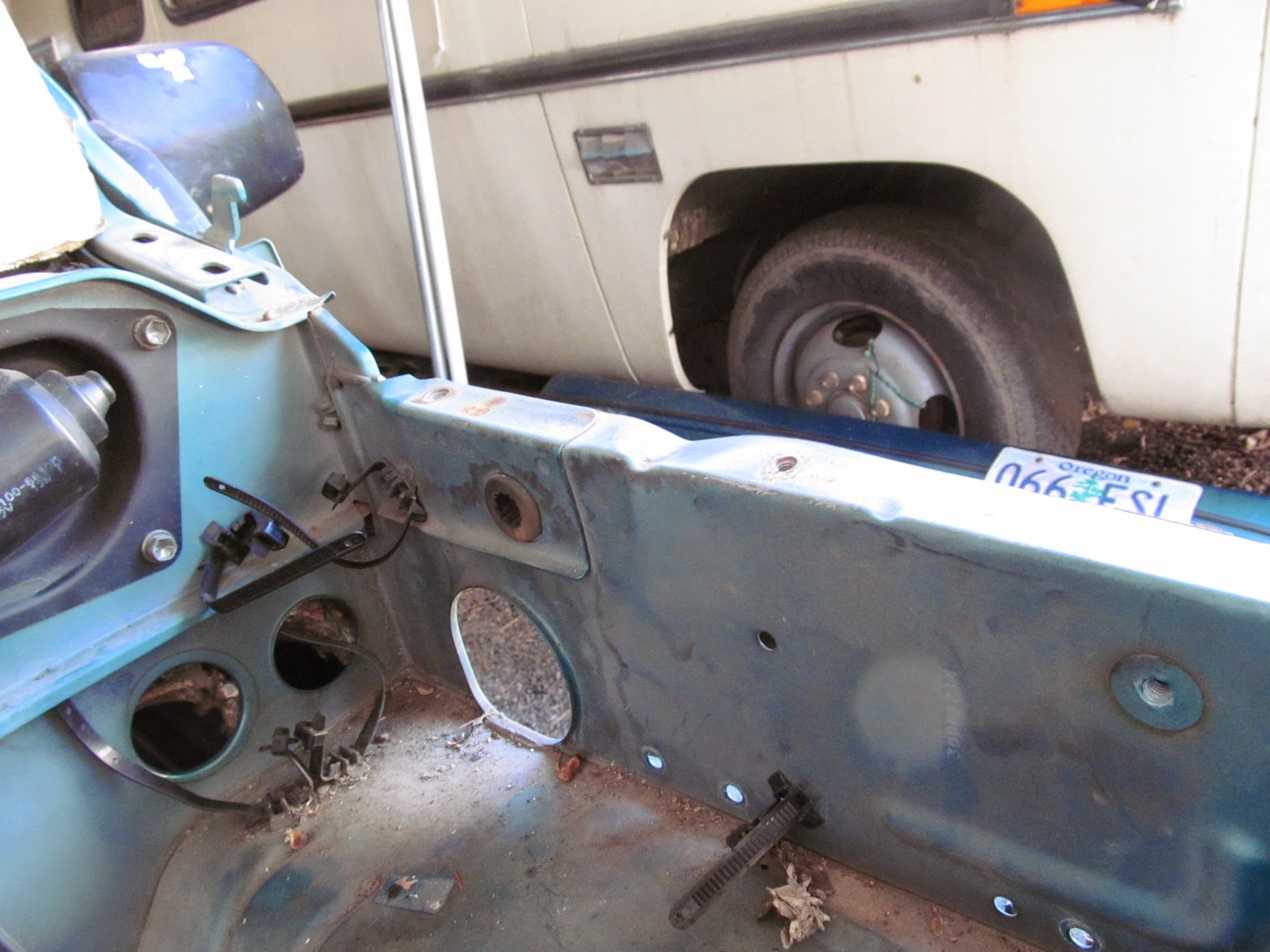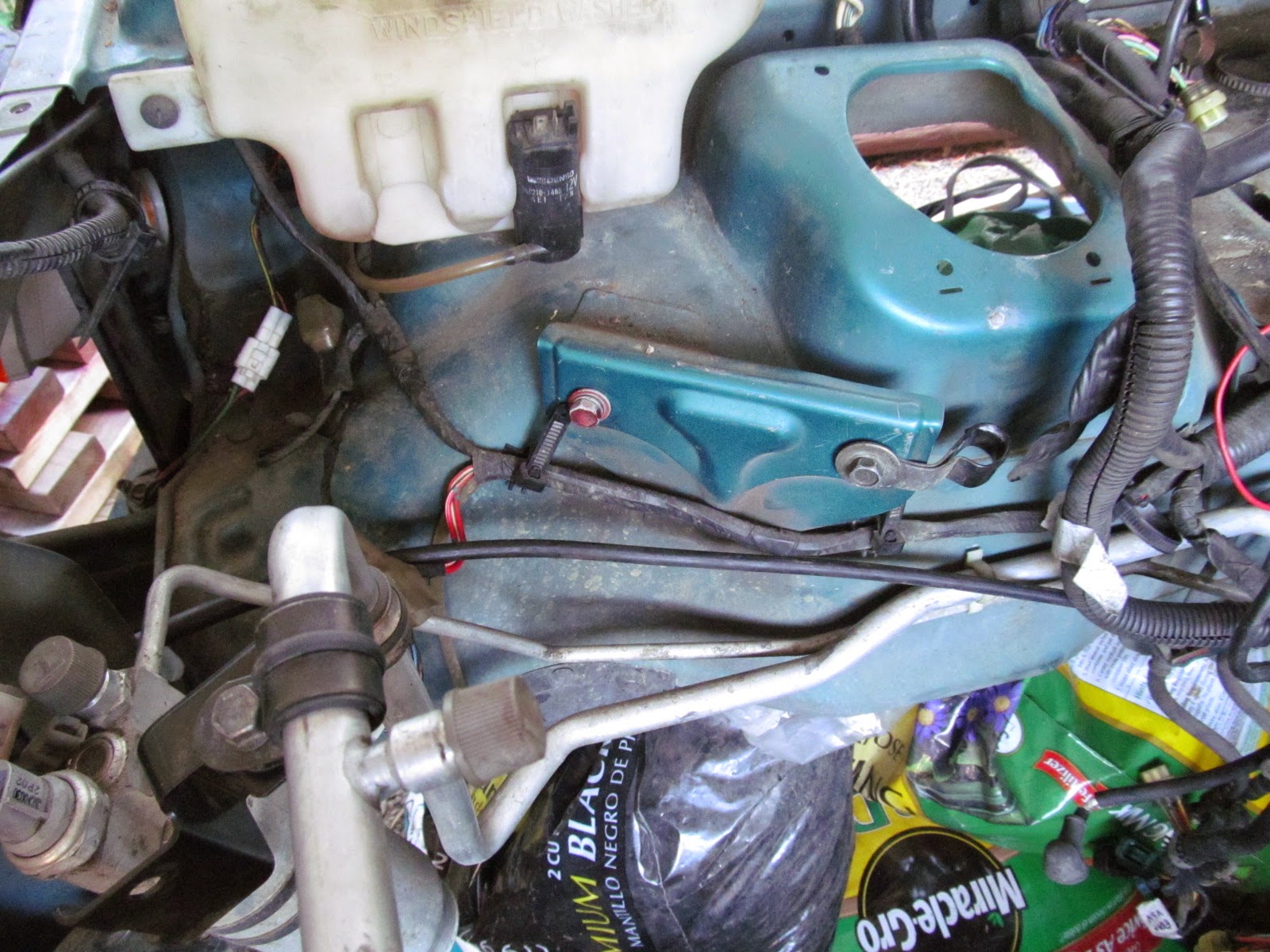I noticed I didn't say anything about my Sidekick Sport after buying it.
I had it on the road after changing the front tie rods and rims. They were damaged when I bought it, totaled from CoPart auto auctions.
I also set it up as a towd and have towed it to California/Arizona and back a couple of times. (I did burn up a front hub in Arizona, on our way to Oklahoma, and had to leave it at my brother's house. We fixed it on the return trip.
It works well, but is a little too heavy to pull with my GMC.
BUT.... We found out why the Suzuki "J" motors are sensitive to oil. Both being full and being clean.
This is the motor after pulling and disassembly:
Notice the hole in the side of the block... there is a matching hole on the other side! The number one connecting rod blew... taking out the oil pump and both sides of the block.
I called Foreign Engines
http://foreignengines.com/ from the northwest US. They delivered a J18 (front wheel drive application) to my door in under 24 hours.
It took almost a year, but I got it installed:
That seemed to be my last picture of this project. I THOUGHT I had taken some during the actual install.
I went out and took a few today:
Sharp eyed readers will notice the exhaust manifold isn't a J18 item. My J18 one was cracked... just a little. ;) I got a manifold from a J20 equipped Tracker... I think a 2000. But I needed to find a way to connect it as the newer applications use the cat as the down-pipe and can not get them from Pick-n-pull. I had a muffler shop connect it up along with a larger pipe and muffler.
It is a bit loader than I like but WELL within legal limits.
Here it is today, not bad for something that has about to be scrapped more than a few times!
Now I need to get back to work on my current project:
UPDATE to this page:
I was asked to provide pictures of my rear seal installation tools / method. I destroyed several seals trying different methods until I hit on this one.
Plumbing parts from home depot. take the seal with you and pick out the size you need.
Three studs from exhaust manifold to head connection. to hold the guide in place.
there was an angled lip on my "guide" pipe. I was concerned it would catch, but it seemed to work fine with it.
Use grease to ensure the seal slides easily.
The seal installation tool... I put a block of wood across the open end and hit it with a mallet. I can not remember what the duct tape was for... depth indicator?
Went in first time with no problems. Just remove the studs and you are good to go!
Installed seal.
































































